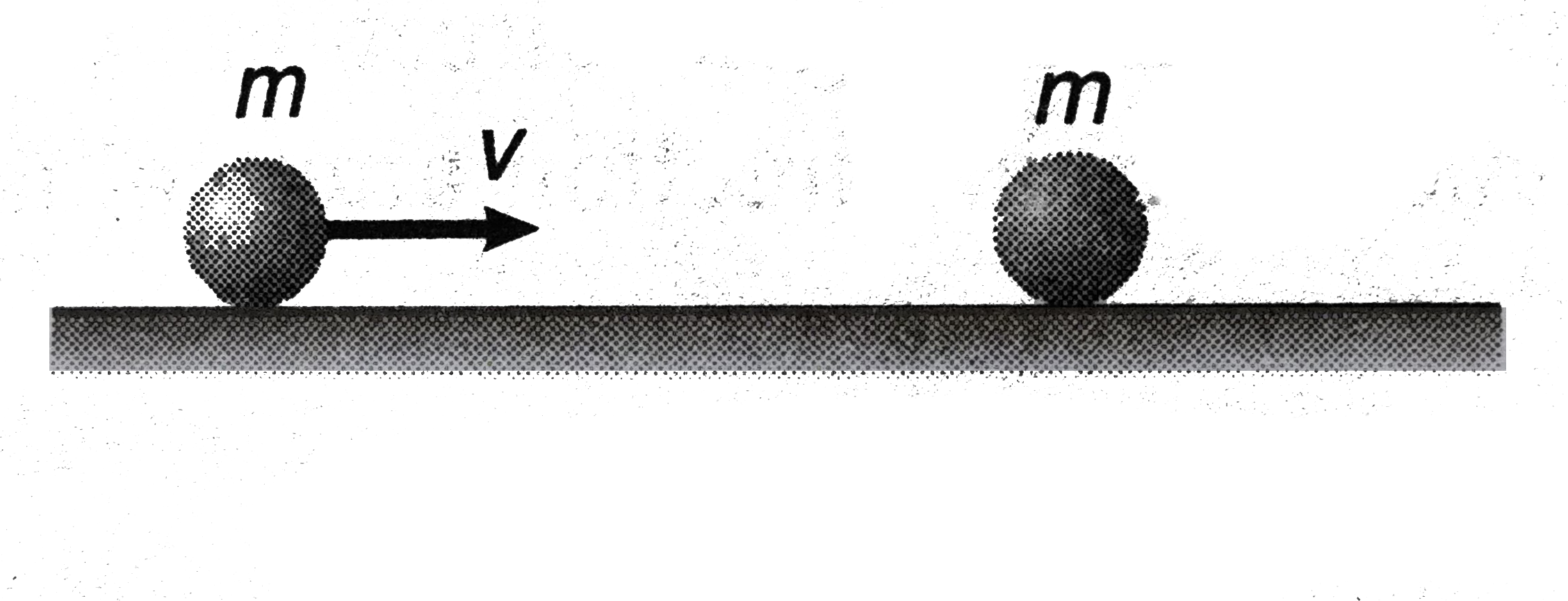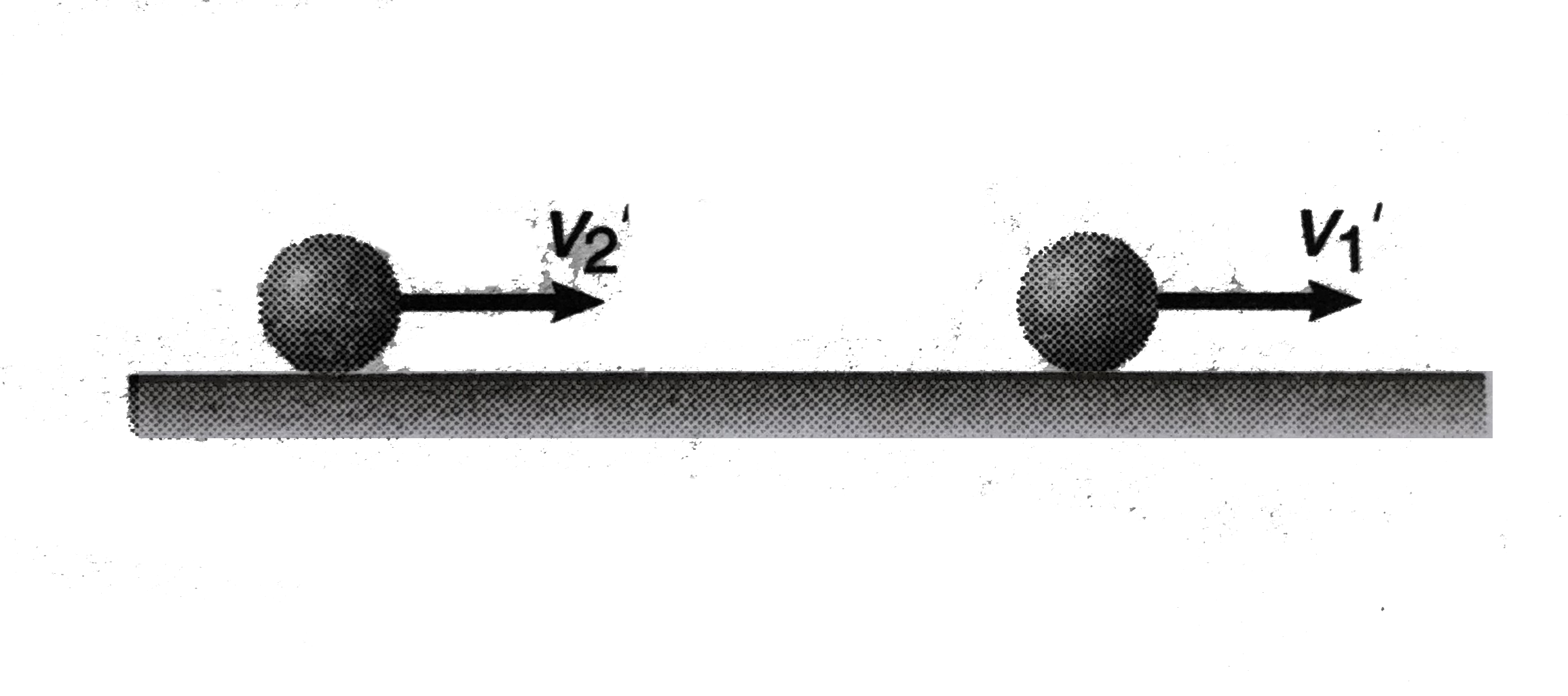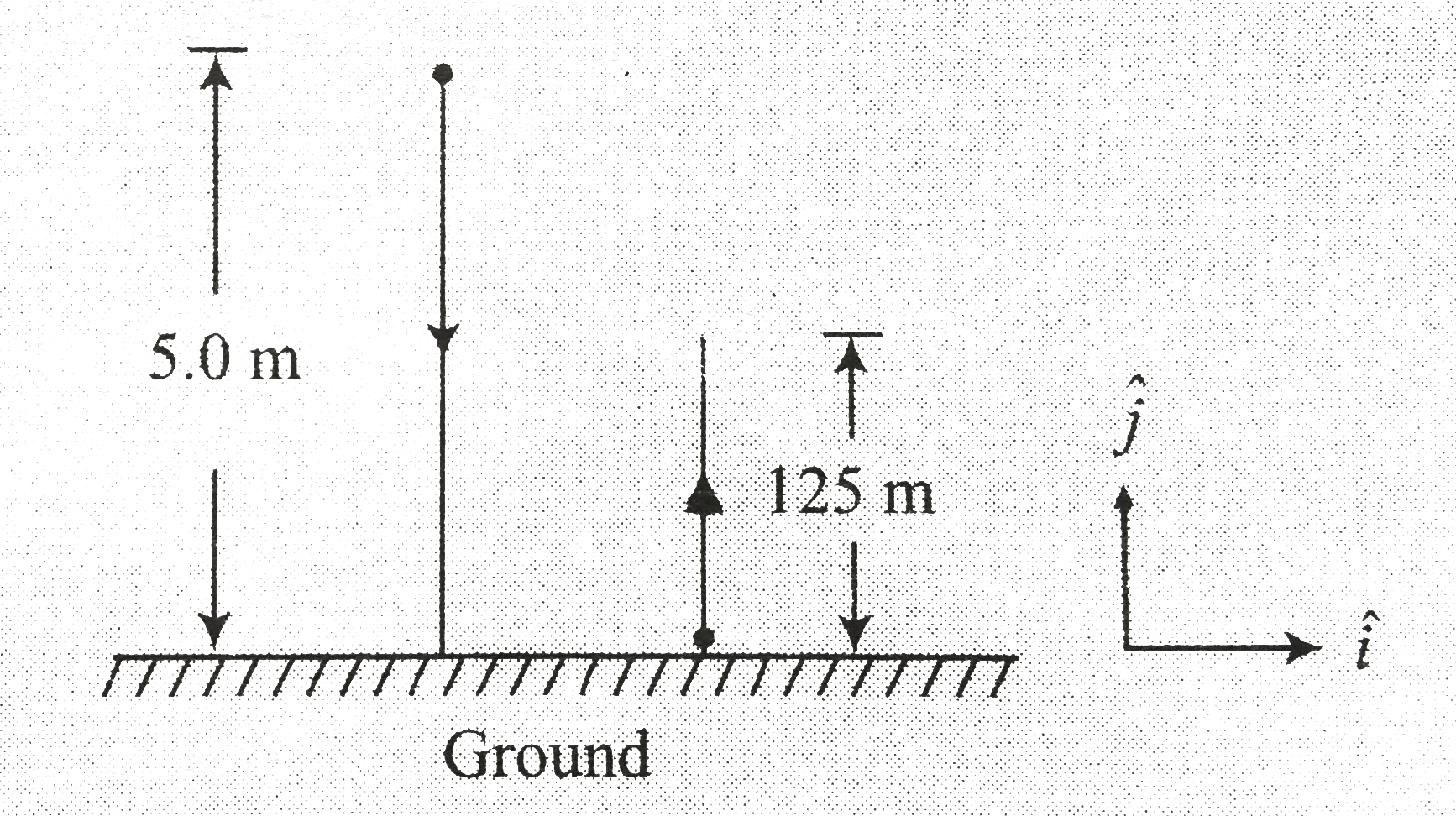A ball of mass 05 kg slows down from a speed of 5 m s−1 to that of 3 m s−1 . Calculate the change in the kinetic energy of the ball.
To solve the problem of calculating the change in kinetic energy of a ball with a mass of 5 kg that slows down from a speed of 5 m/s to 3 m/s, we can follow these steps:
Step 1: Understand the formula for kinetic energy
The formula for kinetic energy (KE) is given by:
KE=12mv2
where m is the mass of the object and v is its velocity.
Step 2: Calculate the initial kinetic energy (KE1)
Given:
- Mass m=5 kg
- Initial velocity v1=5 m/s
Using the formula:
KE1=12×5×(5)2
Calculating:
KE1=12×5×25=1252 joules
KE1=62.5 joules
Step 3: Calculate the final kinetic energy (KE2)
Given:
- Final velocity v2=3 m/s
Using the formula:
KE2=12×5×(3)2
Calculating:
KE2=12×5×9=452 joules
KE2=22.5 joules
Step 4: Calculate the change in kinetic energy (ΔKE)
The change in kinetic energy is given by:
ΔKE=KE1−KE2
Substituting the values:
ΔKE=62.5−22.5
Calculating:
ΔKE=40 joules
Final Answer
The change in kinetic energy of the ball is 40 joules.
---
The formula for kinetic energy (KE) is given by:
KE=12mv2
where m is the mass of the object and v is its velocity.
Given:
- Mass m=5 kg
- Initial velocity v1=5 m/s
KE1=12×5×(5)2
Calculating:
KE1=12×5×25=1252 joules
KE1=62.5 joules
Given:
- Final velocity v2=3 m/s
KE2=12×5×(3)2
Calculating:
KE2=12×5×9=452 joules
KE2=22.5 joules
The change in kinetic energy is given by:
ΔKE=KE1−KE2
Substituting the values:
ΔKE=62.5−22.5
Calculating:
ΔKE=40 joules
The change in kinetic energy of the ball is 40 joules.
Topper's Solved these Questions
- WORK ENERGY AND POWERBook:ICSEChapter: WORK ENERGY AND POWERExercise:EXERCISE-2 (C)
Explore 9 Videos
- WORK ENERGY AND POWERBook:ICSEChapter: WORK ENERGY AND POWERExercise:EXERCISE-2(C )MULTIPLE CHOICE TYPE
Explore 2 Videos
- WORK ENERGY AND POWERBook:ICSEChapter: WORK ENERGY AND POWERExercise:EXERCISE-2(B) (MULTIPLE CHOICE TYPE )
Explore 2 Videos
- CALORIMETRYBook:ICSEChapter:CALORIMETRYExercise:EXERCISE-11(B) (NUMERICALS)
Explore 15 Videos
Similar Questions
A ball of mass 0.20 kg is thrown vertically upwards with an initial velocity of 20 m s−1 .Calculate the maximum potential energy it gains as it goes up.
View SolutionA cricket ball of mass 100 g moving with a speed of 30ms−1 is brought to rest by a player in 0.03 s. Find the change in momentum of ball.
View SolutionA ball of mass 0.50 kg moving at a speed of 5.0 m/s collides with another ball of mas 1.0 kg. After the collision the balls stick together ane remain motionless. What was the velocity of the 1.0 kg block before the collision?
View SolutionA ball of mass m moving at a speed v makes a head on inelastic collision with an identical ball at rest. The kinetic energy of the balls after the collision is 34th of the original. Find the coefficient of restitution.


View SolutionA ball of mass 10 g falls from a height of y 5 m. It rebounds from the ground to a height of 4m. Find :
(a) the initial potential energy of the ball, (b) the kinetic energy of the ball just before the ground. striking the ground,
(c) the kinetic energy of the ball after striking the ground ,and
(d) the loss in kinetic energy on striking the ground .
Take g=9.8 m s−2.
View SolutionA metal ball of mass 2 kg is allowed to fall freely from rest from a height of 5 m above the ground.
(a)Taking g=10 ms−2 ,Calculate :
(i)the potential energy possessed by the ball when it is initially at rest.
(ii)the kinetic energy of the ball just before it his the ground?
(b)What happens to the mechanical energy after the ball his the ground and comes to rest ?
View SolutionA rubber ball of mass 50 g falls from a height of 5m and rebounds to a height of 1.25 m. Find the impulse and the average force between the ball and the ground if the time for which they are in contact was 0.1s

View SolutionA steel ball of mass 0.1 kg falls freely from a height of 10 m and bounces to a height of 5.4 m from the ground. If the dissipated energy in this process is absorbed by the ball, the rise in its temperature is (specific heat of steel =460K/kg∘/C,g=10m/s2)
View SolutionA ball of mass 20 g falls from a height of 10 m and after striking the ground.It rebounds from the ground to a height of 8 m .
(a) Calculate:
(i)The kinetic energy of the ball just before striking the ground ,and
(ii)The loss in kinetic energy of the ball on striking the ground,and
(ii)the loss in kinetic energy of the ball on striking the ground.
(b)What happens to the loss in kinetic energy in part(ii) ?
Take g=10 m s−2 Neglect air friction .
View SolutionA particle of mass 1kg is moving about a circle of radius 1m with a speed of 1m/s. Calculate the angular momentum of the particle.
View Solution